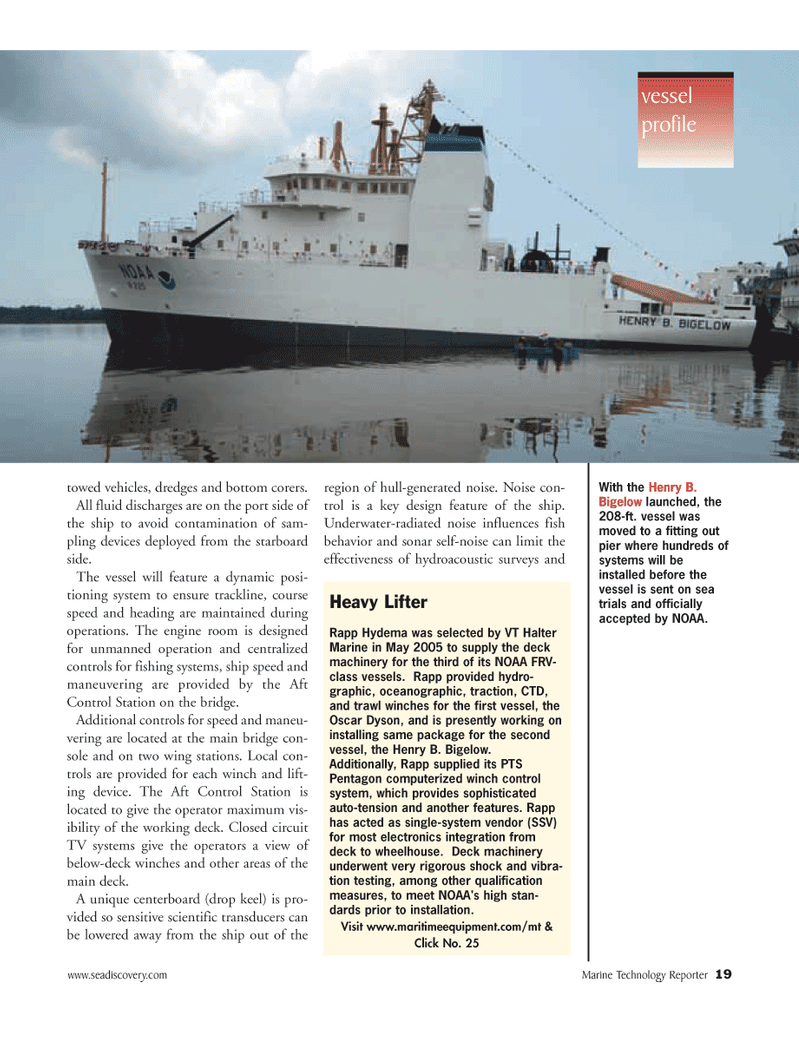
Page 19: of Marine Technology Magazine (November 2005)
Seafloor Engineering
Read this page in Pdf, Flash or Html5 edition of November 2005 Marine Technology Magazine
www.seadiscovery.com Marine Technology Reporter 19 towed vehicles, dredges and bottom corers.
All fluid discharges are on the port side of the ship to avoid contamination of sam- pling devices deployed from the starboard side.
The vessel will feature a dynamic posi- tioning system to ensure trackline, course speed and heading are maintained during operations. The engine room is designed for unmanned operation and centralized controls for fishing systems, ship speed and maneuvering are provided by the Aft
Control Station on the bridge.
Additional controls for speed and maneu- vering are located at the main bridge con- sole and on two wing stations. Local con- trols are provided for each winch and lift- ing device. The Aft Control Station is located to give the operator maximum vis- ibility of the working deck. Closed circuit
TV systems give the operators a view of below-deck winches and other areas of the main deck.
A unique centerboard (drop keel) is pro- vided so sensitive scientific transducers can be lowered away from the ship out of the region of hull-generated noise. Noise con- trol is a key design feature of the ship.
Underwater-radiated noise influences fish behavior and sonar self-noise can limit the effectiveness of hydroacoustic surveys and vessel profile
With the Henry B.
Bigelow launched, the 208-ft. vessel was moved to a fitting out pier where hundreds of systems will be installed before the vessel is sent on sea trials and officially accepted by NOAA.
Heavy Lifter
Rapp Hydema was selected by VT Halter
Marine in May 2005 to supply the deck machinery for the third of its NOAA FRV- class vessels. Rapp provided hydro- graphic, oceanographic, traction, CTD, and trawl winches for the first vessel, the
Oscar Dyson, and is presently working on installing same package for the second vessel, the Henry B. Bigelow.
Additionally, Rapp supplied its PTS
Pentagon computerized winch control system, which provides sophisticated auto-tension and another features. Rapp has acted as single-system vendor (SSV) for most electronics integration from deck to wheelhouse. Deck machinery underwent very rigorous shock and vibra- tion testing, among other qualification measures, to meet NOAA's high stan- dards prior to installation.
Visit www.maritimeequipment.com/mt &
Click No. 25
MTR#3 (17-32).qxd 11/14/2005 12:50 PM Page 19

 18
18

 20
20
